Supporting Autistic Children Through Changes In Routine
Understanding the Foundations of Routine Support
For children with autism spectrum disorder (ASD), routines are not just daily habits; they are vital frameworks that provide comfort, predictability, and a sense of safety. Establishing consistent routines, including wake-up, meal, and bedtime, offers a steady environment that fosters emotional stability and reduces anxiety. Visual supports such as schedules, charts, and social stories clarify expectations and help children anticipate upcoming events. Incorporating preferred activities within routines encourages motivation and participation, while maintaining regularity builds trust and confidence. Regular review and adjustment of routines ensure they evolve with the child’s developing needs, promoting continuous growth and well-being.
The Significance of Routines for Autistic Children
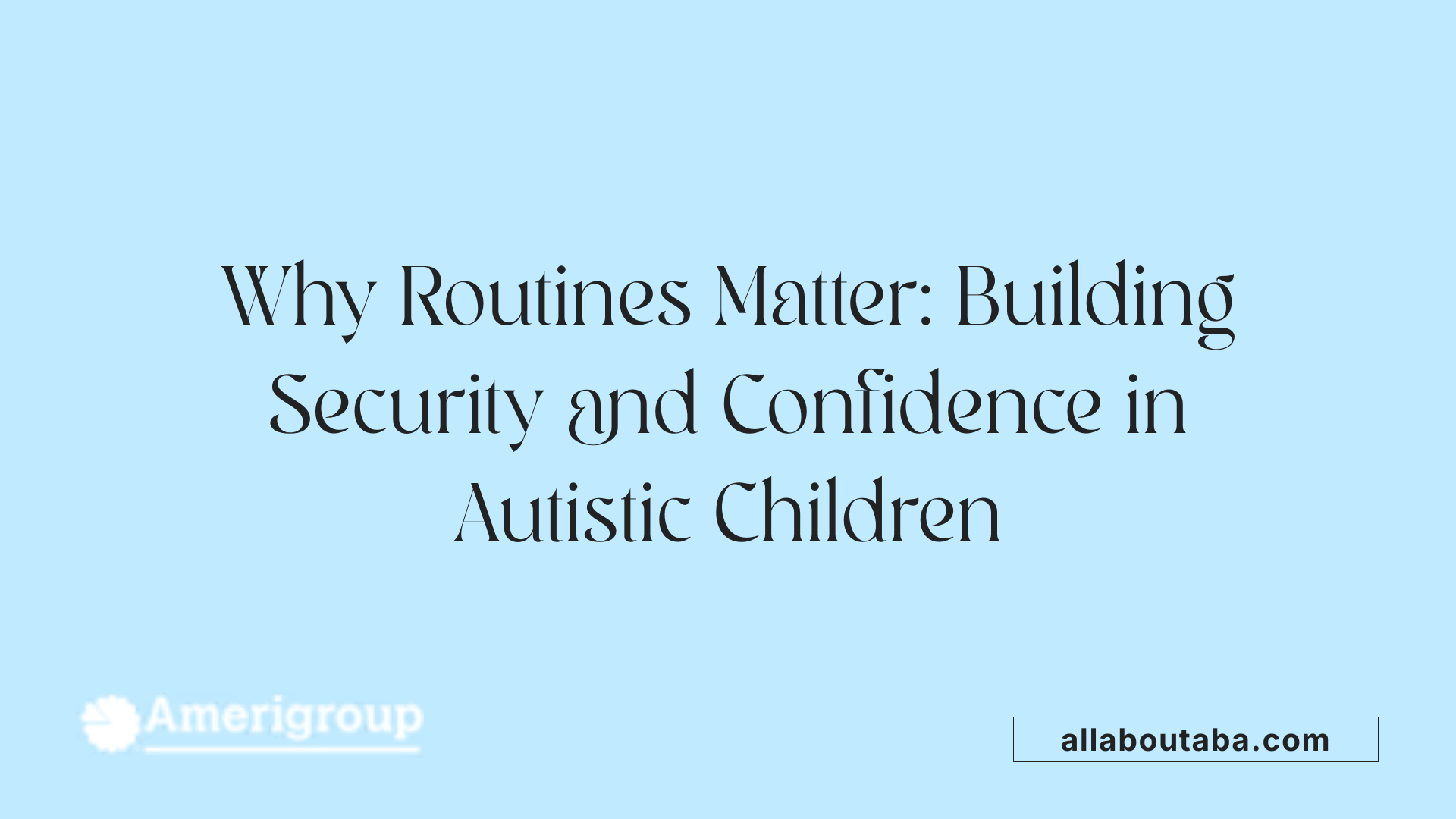
Why are routines important for autistic children?
Routines play a vital role in the lives of children with autism spectrum disorder (ASD). They provide a framework of predictability and stability, which helps children feel safe and secure. Knowing what to expect each day reduces feelings of uncertainty and anxiety, making transitions more manageable.
Structured routines support emotional regulation by offering consistent cues and predictable patterns. This consistency encourages a sense of control, leading to fewer meltdowns and challenging behaviors. Additionally, routines facilitate skill development and independence.
Visual supports such as schedules, social stories, and countdowns serve as concrete tools that enhance understanding. Incorporating children in designing their routines fosters cooperation, boosts confidence, and helps them learn to anticipate changes.
Overall, routines help improve overall well-being, promote positive social interactions, and create an environment conducive to learning and growth.
What are the main ways routines support children with ASD?
| Aspect | Explanation | Additional Details |
|---|---|---|
| Predictability | Provides a clear structure, reducing anxiety and confusion | Children know what to expect, which helps them prepare mentally and emotionally |
| Emotional regulation | Smaller, predictable steps aid in managing emotions | Calms children during transitions and stressful moments |
| Skill development | Routine tasks foster independence and specific skills | Includes self-care, turn-taking, and communication |
| Social skills | Consistent routines improve social interactions | They learn expectations and appropriate behaviors |
| Use of visual supports | Visual cues clarify daily activities and upcoming changes | Includes schedules, social stories, and timers |
| Child involvement | Engaging children in routine creation | Enhances understanding and commitment to routines |
How do visual supports and routine involvement help autistic children?
Visual tools like social stories, visual schedules, and countdown calendars make routines more understandable. These supports reduce uncertainties around changes, alleviating anxiety.
Involving children in developing and modifying routines respects their preferences and promotes active participation. This participation encourages flexibility over time, helping children adapt better to life’s inevitable changes.
Gradual exposure to new routines, combined with visual cues and positive reinforcement, nurtures adaptability and independence.
How can caregivers enhance routine stability?
Caregivers should aim for consistency in daily activities such as wake-up, meal, and sleep times. Creating visual and tactile supports, including favorite toys or comfort objects, further enhances feelings of security.
Involving children in routine planning, offering choices within limits, and preparing them in advance for changes fosters a sense of control. Using timers and visual countdowns signals upcoming transitions, helping children mentally prepare.
By maintaining a calm demeanor and providing reassurance, adults can make routines feel predictable and safe, supporting children’s emotional well-being and growth.
Strategies to Support Routine Transitions and Changes
Children with autism often find changes in routine challenging, and supporting them through transitions requires a thoughtful approach. Visual tools like schedules, social stories, and timers are essential in creating predictability, helping children understand what to expect and reducing anxiety.
Using visual schedules with pictures, icons, or words clearly depicts daily activities and upcoming changes. Social stories, created by autism specialists such as Carol Gray, offer step-by-step narratives with images that prepare children for specific transitions or new environments. Timers and countdowns act as auditory or visual cues that signal upcoming changes, giving children ample time to adjust mentally.
Advance preparation can make a significant difference. Visiting new places before an event or change helps familiarize children with the environment, easing their adaptation. Talking about upcoming changes early and visually explaining what will happen next provides a sense of control and reduces uncertainty.
Incorporating motivation and reinforcement strategies helps children engage with routines and accept transitions more easily. Offering small rewards, praise, and preferred activities during or after the change encourages positive behavior and cooperation.
Developing coping skills is vital for fostering independence. Repeated practice, using sensory tools like noise-canceling headphones, and creating calming spaces help children manage sensory overload and emotional distress. Consistent routines and gradual exposure to new experiences build resilience and adaptability.
Finally, involving professionals—including behavioral therapists, speech-language therapists, and occupational therapists—alongside caregivers and educators ensures tailored support strategies. A collaborative environment that respects each child's unique needs and provides patience and encouragement promotes smoother transitions and emotional security.
Managing Emotional and Behavioral Responses to Routine Disruptions
How can caregivers manage behavioral and emotional responses to routine disruptions?
Children with autism often find comfort in predictable routines, and changes can trigger anxiety, frustration, or behavioral outbursts. To help manage these reactions, caregivers can utilize visual supports such as picture schedules, countdowns, and First-Then Boards. These tools make transitions clear and predictable, reducing uncertainty and helping children feel more secure.
Preparation is also crucial. Using social stories that explain upcoming changes in a simple, visual way prepares children beforehand. Visiting new environments before an event or change allows children to familiarize themselves, easing the stress of unfamiliar settings.
Teaching flexibility gradually encourages children to adapt to small, incremental changes. Offering choices within routines empowers children, fostering a sense of control and encouraging positive coping behaviors.
Maintaining a consistent daily structure provides stability, which is essential during routine disruptions. It creates a predictable environment where children know what to expect, reducing anxiety.
Validating feelings is fundamental. Acknowledging a child's emotions and using calming techniques like deep pressure, sensory toys, or listening to soothing music can help manage stress. Creating quiet, safe spaces — sensory-friendly zones designed for calming — allows children to self-regulate when overwhelmed.
Support from trained caregivers, including strategies from applied behavior analysis (ABA) or functional behavior assessments, can reinforce desirable behaviors and discourage maladaptive responses. Combining visual supports, preparation, structure, and emotional validation builds resilience, helping children navigate change more smoothly and confidently.
Easing Transitions During Daily Routines and Life Events
Children with autism often find changes in routine or environment challenging, which can lead to increased anxiety, stress, or behavioral issues. To help make these transitions smoother, various strategies can be employed, focusing on visual supports, preparation, involvement, sensory accommodations, and consistency.
One of the most effective tools is the use of visual supports, such as schedules, timers, countdowns, and social stories. Visual schedules provide a concrete picture of upcoming activities, helping children understand what to expect and reducing uncertainty. Timers and countdowns serve as cues for upcoming transitions, giving children time to prepare mentally.
Preparation in advance is crucial. This includes previewing changes through social stories or videos, visiting new settings before an event, and giving children a
Understanding the Challenges of Routine Changes and Addressing Them
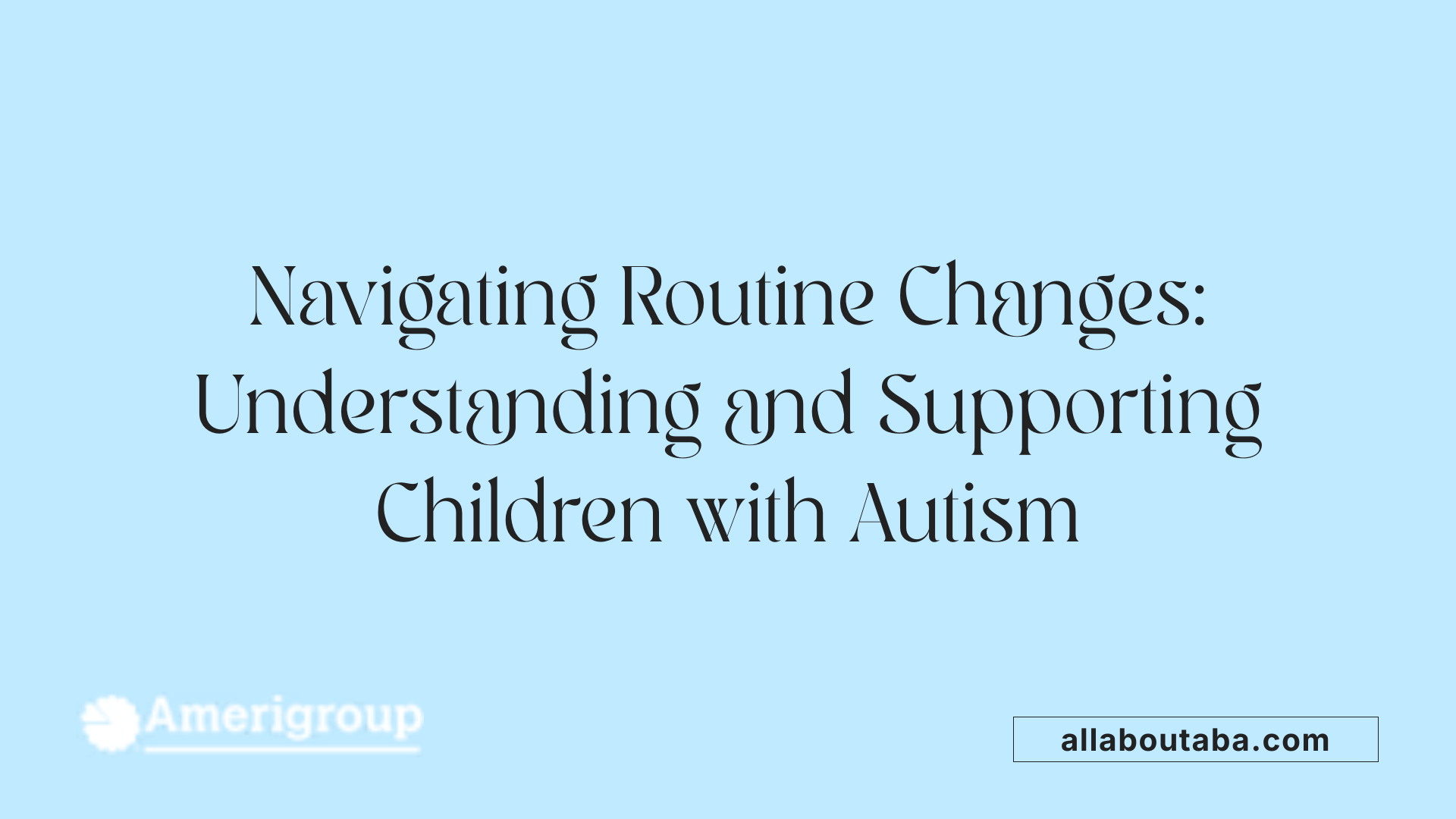 Children with autism spectrum disorder (ASD) often rely heavily on predictable routines and structured environments to feel secure and manage daily stressors. They typically thrive on stability, knowing what to expect and having clear expectations. When routines are disrupted, these children can experience heightened anxiety, confusion, and emotional distress. This can manifest in behaviors such as tantrums, withdrawal, or refusal to participate in activities.
Children with autism spectrum disorder (ASD) often rely heavily on predictable routines and structured environments to feel secure and manage daily stressors. They typically thrive on stability, knowing what to expect and having clear expectations. When routines are disrupted, these children can experience heightened anxiety, confusion, and emotional distress. This can manifest in behaviors such as tantrums, withdrawal, or refusal to participate in activities.
The reason routine changes are challenging is tied to their need for predictability. They may struggle to recognize cues that signal upcoming transitions and can find unanticipated changes overwhelming. Sensory sensitivities also play a role, as unexpected stimuli during routines can lead to sensory overload.
To help children cope, visual supports are invaluable. Visual schedules, social stories, timers, and picture cues prepare them in advance. For instance, a social story can explain what will happen during a transition step-by-step, while visual timers or countdowns signal how long an activity will last, helping the child mentally prepare.
Calming techniques and sensory accommodations further support children during these times. Using sensory tools like noise-canceling headphones, providing sensory breaks, or creating a calm-down corner can help manage sensory overload and emotional distress.
Patience and clear communication from caregivers, along with professional support such as behavioral or occupational therapy, enhance a child's ability to develop coping strategies. Consistent routines, combined with gradual and well-structured changes, foster resilience and enable children to navigate routine disruptions more comfortably.
Tools and Resources for Supporting Routine Needs
What tools and resources are available to support routines and manage routine challenges for autistic children?
Supporting children with autism in maintaining routines can be enhanced through a variety of tools and strategies that promote understanding, predictability, and comfort. Visual supports, such as schedules, charts, and social stories, are fundamental. These visuals clearly depict daily activities, upcoming events, and expectations, helping children grasp what will happen next and reducing anxiety.
Digital tools also play an important role. Visual timers and countdown systems give children concrete cues about when routines or transitions will occur, helping them mentally prepare for change. Social narratives or stories, often created through online resources or apps, provide step-by-step explanations of routines and new experiences, fostering confidence and smoother transitions.
In addition, role-playing activities and social skills training encourage children to practice social interactions, turn-taking, and emotional regulation in a fun, structured way. Board games specifically designed for social development can reinforce these skills while being engaging.
Personalized support is crucial. Creating ‘About Me’ profiles that include a child's preferences, strengths, and specific needs allows caregivers, educators, and therapists to tailor interventions effectively. Collaboration with professionals such as occupational therapists, speech-language pathologists, and behavioral specialists ensures that routines are adapted to each child's individual profile.
Creating an environment that is sensory-friendly, with accommodations like calming sensory spaces, noise-canceling headphones, and sensory object collections, helps children feel safe and comfortable during transitions or routine changes.
Together, these tools and resources provide a comprehensive approach to supporting routine needs and overcoming challenges faced by autistic children, promoting independence, reducing stress, and enhancing overall well-being.
Supporting Specific Routine Changes: Mornings and Environmental Shifts
 Supporting children with autism during routine changes, such as mornings or environmental shifts, requires thoughtful strategies to promote comfort and predictability. Visual supports like social stories, visual schedules, and timers play a crucial role in helping children understand what to expect. For example, a visual schedule can outline each morning step, providing a clear sequence that reduces confusion.
Supporting children with autism during routine changes, such as mornings or environmental shifts, requires thoughtful strategies to promote comfort and predictability. Visual supports like social stories, visual schedules, and timers play a crucial role in helping children understand what to expect. For example, a visual schedule can outline each morning step, providing a clear sequence that reduces confusion.
Preparation is key. Explaining upcoming changes in simple language and using visual tools or videos allows children to become familiar with new routines or environments before they occur. Visiting new places beforehand or showing pictures of the setting can ease anxiety and build confidence.
Calming strategies and sensory tools are also beneficial. Creating a designated calm-down corner, offering sensory toys, noise-canceling headphones, or preferred objects can help children self-regulate during transitions. Sensory accommodations tailored to individual needs make unfamiliar or overstimulating environments more manageable.
Including choices within routines empowers children and gives them a sense of control. For instance, letting them choose between two clothing options or preferred activities can make mornings more engaging. Positive reinforcement, such as praise or small rewards for successful transitions, encourages adaptive behaviors.
Patience and consistency are essential. Maintaining familiar routines as much as possible, using clear communication with gestures or simple words, and involving children in planning or decision-making build trust. Celebrating small successes and adjusting strategies based on the child's needs foster a supportive environment for navigating routine changes smoothly.
Personalizing Support and Building Flexibility
How do autistic people typically handle change in routines?
Autistic individuals often find routine changes challenging due to their preference for predictability and familiarity. Sudden or unexpected alterations can lead to increased anxiety, confusion, or emotional distress. To support them, it's important to implement strategies that promote adaptability gradually.
One effective approach is introducing small, incremental changes over time. This helps the child or adult build tolerance and understand that change is manageable. Visual supports like social stories or schedules with a '?' symbol to denote uncertainty can prepare them mentally for possible variations, reducing surprise and stress.
Reward systems, such as praise or preferred activities, reinforce flexible behavior and help develop coping skills. Additionally, involving the individual in decision-making or routine planning fosters a sense of control and autonomy.
Adjusting routines as needed ensures they remain effective and supportive. This could include altering the order of activities, adding sensory breaks, or modifying the environment to better suit changing needs.
Overall, personalized and gradual approaches—centered on understanding the individual's comfort levels—are crucial. Combining visual supports, positive reinforcement, and active participation promotes greater resilience and smoother transitions for autistic people.
The Role of Positive Reinforcement and Celebrating Progress
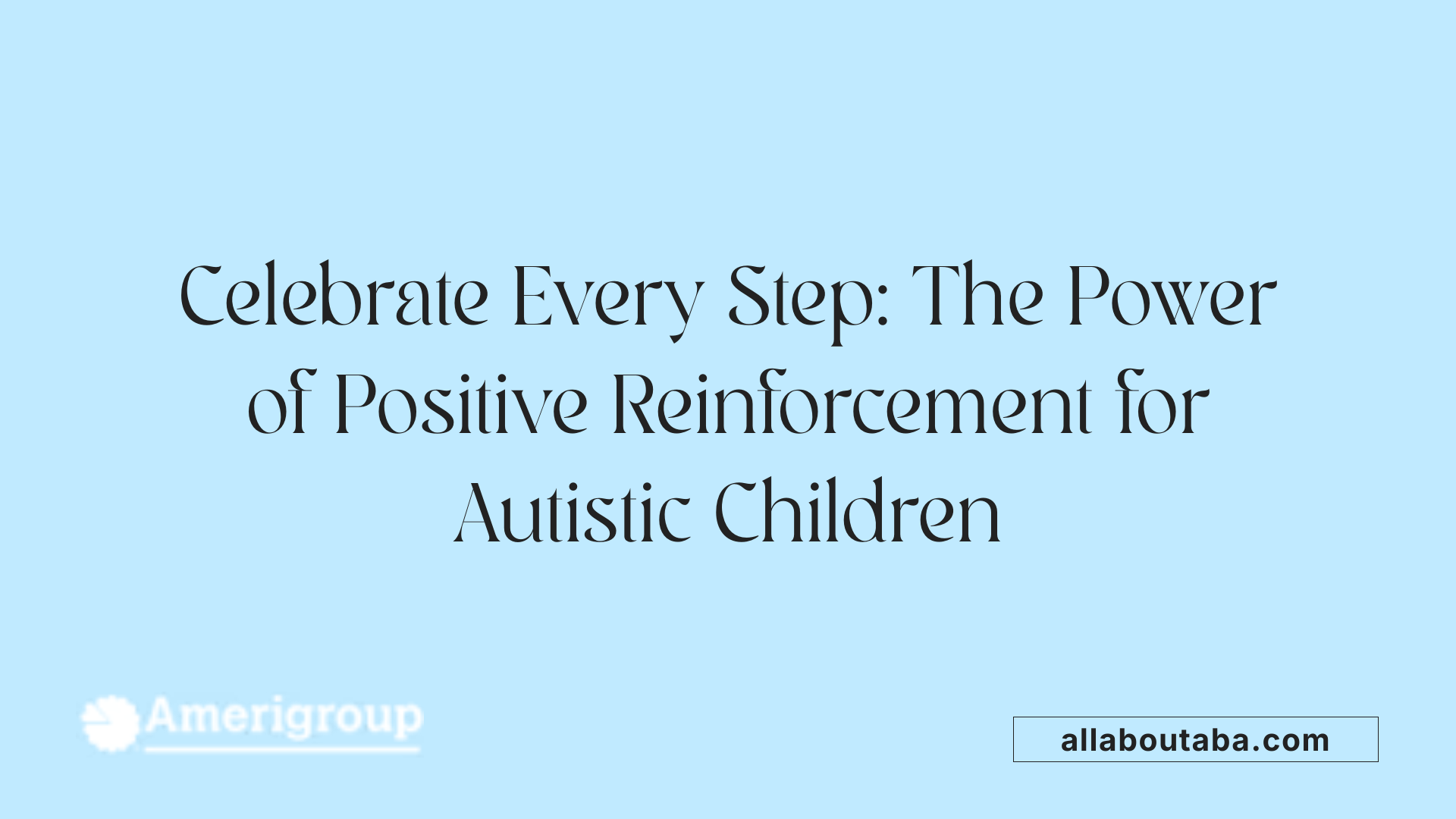 Children with autism often respond well to positive reinforcement, which helps motivate them and reinforces desirable behaviors. Using praise, rewards like stickers or tokens, and other forms of reinforcement encourages children to engage more actively in routines and therapeutic activities. Recognizing small successes, such as completing a task or managing a transition without distress, boosts their confidence and encourages continued effort.
Children with autism often respond well to positive reinforcement, which helps motivate them and reinforces desirable behaviors. Using praise, rewards like stickers or tokens, and other forms of reinforcement encourages children to engage more actively in routines and therapeutic activities. Recognizing small successes, such as completing a task or managing a transition without distress, boosts their confidence and encourages continued effort.
Celebrating these achievements fosters a sense of accomplishment and creates positive associations with new routines or challenges. It is important for caregivers and educators to acknowledge progress regularly, making the child feel valued and supported. For example, offering specific praise like ‘Great job putting away your toys’ or using a reward system can make routines more engaging.
Building routines around positive experiences and rewards helps children develop flexibility and the ability to adapt to change over time. This approach supports ongoing development in social and life skills while reducing anxiety linked to unpredictability.
How can caregivers help an autistic child calm down during stressful moments?
Caregivers can support autistic children during stressful moments by creating a predictable and calm environment. Visual timers and countdowns prepare the child for upcoming transitions, reducing uncertainty. Providing a designated safe space or sensory toolkit stocked with comforting items, such as weighted blankets or noise-canceling headphones, offers a way for children to self-regulate.
Techniques like deep pressure, sensory stimming, or body-based activities can soothe sensory overload. It’s crucial that caregivers remain calm and patient, modeling peaceful behavior and giving reassuring words. During meltdowns, helping the child move to a calm space, reducing sensory input, and allowing time to recover are effective strategies. After the child has calmed, gentle discussions about what happened and early warning signs can help anticipate and prevent future distress.
Support from caregivers, therapists, and teachers, combined with consistent routines and positive reinforcement, not only helps in calming the child but also promotes resilience and emotional regulation skills.
A Continuous Journey of Support and Understanding
Supporting autistic children through routine changes is an ongoing process that requires patience, preparation, and adaptability. By establishing predictable structures, utilizing visual and sensory supports, and fostering independence through positive reinforcement, caregivers and educators can help reduce anxiety and promote resilience. Tailoring strategies to each child's unique needs—whether during daily routines, environmental shifts, or unexpected disruptions—builds confidence and emotional stability. Collaboration among families, professionals, and the children themselves creates a nurturing environment where growth and adaptation become natural. Remember, every step taken toward understanding and accommodating routine challenges contributes significantly to the child's well-being and development, making each transition a manageable and even empowering experience.
References
- 10 Ways To Establish Routines for Children with Autism
- Children, Autism, and Change: Tips to Make Transition Easier
- How to help your autistic child with day-to-day life - NHS
- Supporting Autistic Children Through Big Life Transitions
- Preference for order, predictability or routine - National Autistic Society
- Changing routines: autistic children and teenagers
- Autism and Transitions For Kids - Lurie Children's
- School Mornings Without the Stress - Child Mind Institute
Other articles
Recent articles

How Schools Can Support Autistic Students In Career Prep

Best Strategies For Autism-Friendly Event Planning

Understanding Noncontingent Reinforcement In Autism Behavior Plans

How Drama Therapy Benefits Autistic Individuals

Best Practices For Autism-Friendly Fitness And Recreation Centers

Best Ways To Promote Healthy Social Media Use For Autistic Teens

How To Help Autistic Children Cope With Public Speaking

Autism And Strategies For Managing Unexpected Changes

Best Podcasts About Autism For Parents And Educators

Autism And The Impact Of Seasonal Changes On Behavior

The Role Of Diet In Managing Co-Occurring Conditions With Autism

Sleep Challenges In Autism And Practical Solutions

Best Ways To Build Daily Routines For Autistic Children

Best Practices For Supporting Autistic Entrepreneurs

Autism And Strategies For Navigating Large Social Gatherings

Adaptive Sports And Recreational Activities For People With Autism

Autism And The Benefits Of Story-Based Learning Activities

Understanding The Role Of Play In Autism Development

Autism And The Impact Of Environmental Noise On Learning

How To Create Autism-Friendly Community Spaces

Autism And Chronic Health Conditions: What To Know

The Role Of Care Managers In Autism Life Planning

How To Teach Social Boundaries To Autistic Children

How Autistic Individuals Experience Empathy Differently

How To Support Autistic Employees In Remote Work Settings

Autism And The Relationship Between Motor Skills And Learning

How To Create Community Resource Guides For Autism Families

How To Teach Daily Living Skills To Autistic Teens

Autism And The Impact Of Mind-Body Practices On Stress Reduction

Autism And The Benefits Of Outdoor Group Activities

How To Create Autism-Friendly Sensory Paths In Schools

Best Practices For Autism-Friendly Park And Recreation Areas

Autism And Strategies For Reducing School Refusal

Supporting Autistic Individuals In Public Speaking

The Role Of Diet In Managing Autism Symptoms

The Benefits Of Gardening Clubs For Autism Social Development

How To Prepare Autistic Children For Dental Visits

Autism And Employment: Career Paths That Work

Best Practices For Autism-Friendly Hotels And Lodging

The Impact Of Screen Time On Autism Development

Autism Screening Tools For Early Childhood

The Role Of Physical Exercise In Autism Therapy

Best Strategies For Supporting Autistic College Students

The Role Of Technology In Autism Early Detection

Sensory-Friendly Classroom Design Ideas For Autistic Students

The Role Of Speech Therapy In Building Social Communication Skills

Best Strategies For Handling Autistic Burnout In Adults

Autism And The Importance Of Predictability In Routine

Autism And Peer Education: Teaching Acceptance In Schools

Best Practices For Sensory-Friendly Libraries And Reading Rooms

Self-Advocacy Skills For Autistic Adults

The Role Of Technology In Autism Peer Communication

Promoting Physical Activity In Children With Autism

How To Prepare Autistic Children For Medical Procedures

The Role Of Social Media In Autism Advocacy And Awareness

The Impact Of Sensory Rooms In Public Facilities For Autism

How To Create An Autism-Friendly Holiday Celebration

Best Practices For Inclusive Education For Autistic Students

Autism And Mental Health: Recognizing Signs Of Distress

Best Practices For Sensory-Friendly Waiting Rooms

The Role Of Teachers In Early Autism Red Flag Identification

Autism-Friendly Housing Design Features

Autism-Friendly Housing Design Features

How Environmental Modifications Improve Autism Outcomes

Autism And Technology-Based Learning Tools

Supporting Autistic Children Through Changes In Routine

The Link Between Autism And Working Memory Challenges

Best Practices For Autism-Friendly Cooking Classes

Autism And The Benefits Of Structured Music Lessons

Best Books To Teach Kids About Autism Acceptance

Sensory Diets And Their Benefits For Autism Management

How To Prepare Autistic Teens For Driver’s Education

How To Teach Autistic Teens About Healthy Relationships

The Role Of Visual Prompts In Building Daily Habits For Autism

Addressing Sleep Regression In Children With Autism

Understanding Social Stories And How They Help Autistic Children

Navigating Insurance Coverage For Autism Therapy Services

How To Prepare Autistic Adults For Independent Travel

Supporting Autistic Individuals In Volunteer Work

How Mindfulness Practices Can Support Autism Well-Being

Understanding Hyperfocus And Special Interests In Autism

Understanding Stimming As A Self-Regulation Tool

Sensory-Based Interventions For Autism At Home

Best Ways To Introduce Self-Advocacy In Autistic Teens

Best Ways To Support Autistic Employees In Customer Service Roles

Best Practices For Autism-Friendly Volunteer Programs
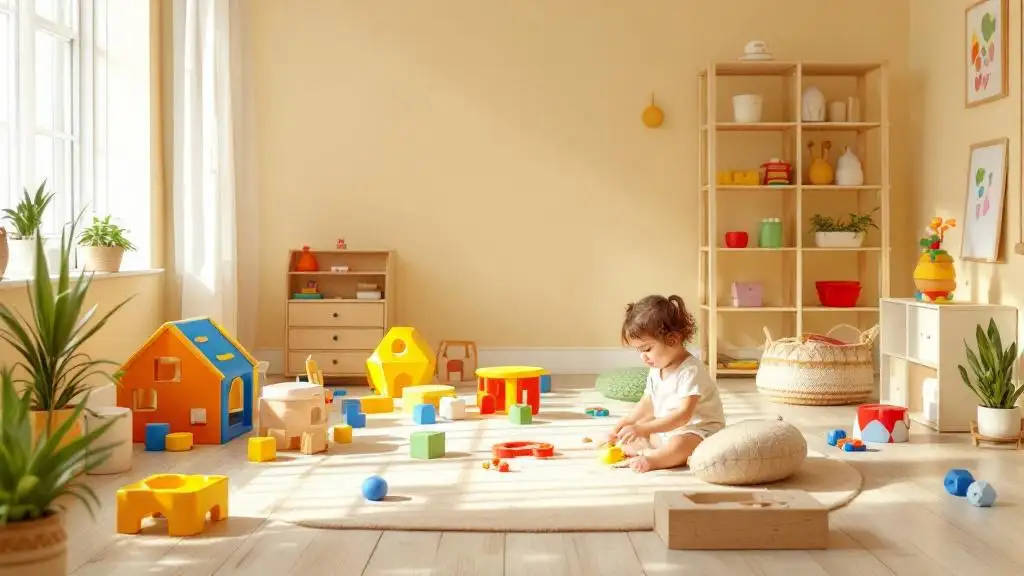
Autism And The Benefits Of Sensory Play For Emotional Growth
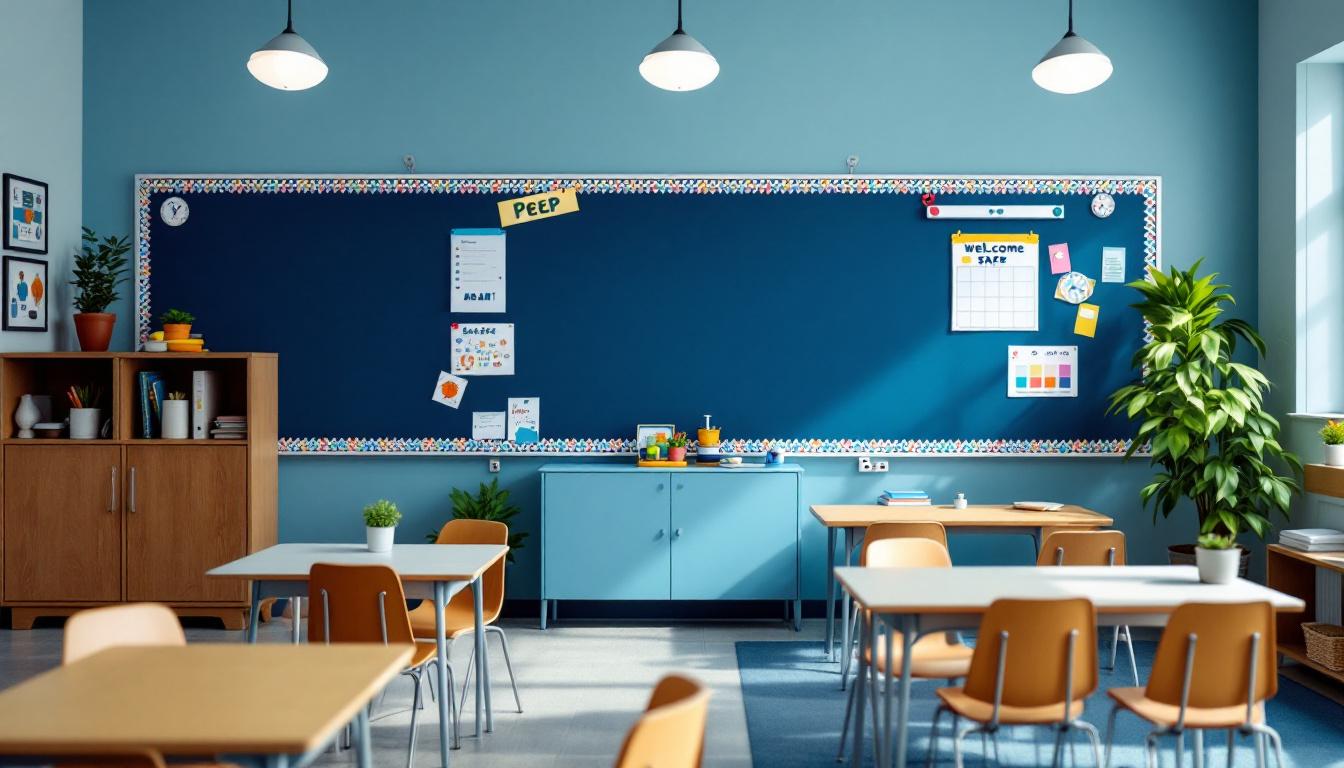
Autism And Strategies For Building Peer Relationships

Understanding How Autism Affects Memory Processing

Autism And Strategies For Building Coping Skills In Teens

The Role Of Parent Training In Autism Intervention Programs

Autism-Friendly Workplace Accommodations

Using Visual Timers For Autism Time Management

What Is ABA Therapy?

Autism and Sleep

Do Plastic Toys Cause Autism?

Autism Facial Expressions
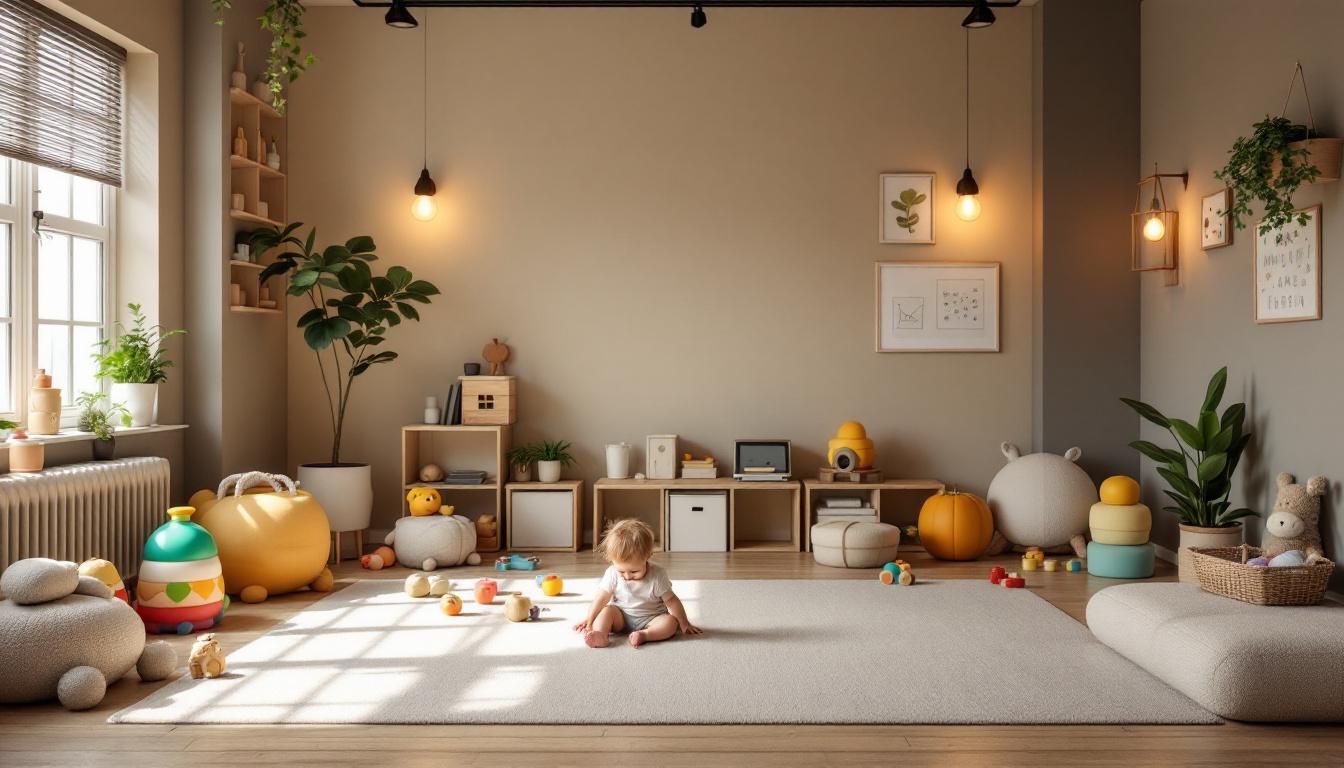
Autism and Motor Skills

Which Parent Carries The Autism Gene?

Autism Symbols & Colors
We’re All About You, Your Family, and Your Child

